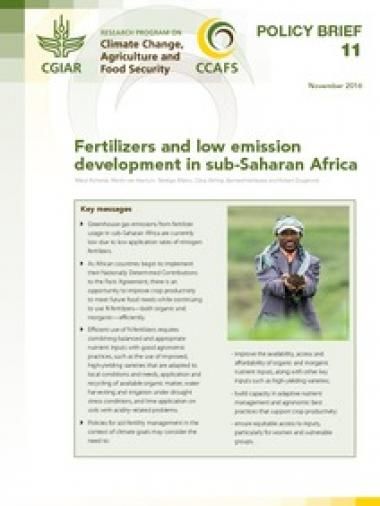Fertilizers and low emission development in sub-Saharan Africa

Greenhouse gas emissions from fertilizer usage in sub-Saharan Africa are currently low due to low application rates of nitrogen fertilizers. As African countries begin to implement their Nationally Determined Contributions to the Paris Agreement, there is an opportunity to improve crop productivity to meet future food needs while continuing to use N fertilizers—both organic and inorganic—efficiently. Efficient use of N fertilizers requires combining balanced and appropriate nutrient inputs with good agronomic practices, such as the use of improved, high-yielding varieties that are adapted to local conditions and needs, application and recycling of available organic matter, water harvesting and irrigation under drought stress conditions, and lime application on soils with acidity-related problems. Policies for soil fertility management in the context of climate goals may consider the need to:
- Improve the availability, access and affordability of organic and inorganic nutrient inputs, along with other key inputs such as high-yielding varieties;
- build capacity in adaptive nutrient management and agronomic best practices that support crop productivity;
- ensure equitable access to inputs, particularly for women and vulnerable groups.
Citation
Richards M, van Ittersum M, Mamo T, Stirling C, Vanlauwe B, Zougmoré R. 2016. Fertilizers and low emission development in sub-Saharan Africa. CCAFS Policy Brief no. 11. Copenhagen, Denmark: CGIAR Research Program on Climate Change, Agriculture and Food Security (CCAFS).